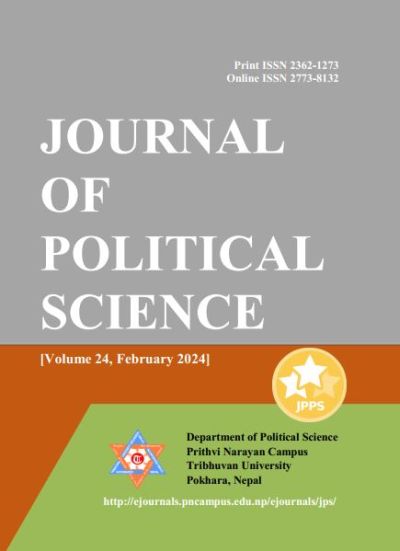Expenditure Practices of Provincial and Local Governments: The Case of Nepal
DOI:
https://doi.org/10.3126/jps.v24i1.62855Keywords:
Decentralization, fiscal federalism, local government expenditure, Nepal, provincial government expenditure, subnational governments, subnational service deliveryAbstract
Nepal promulgated a new constitution in 2015, which adopted a federal system of governance to achieve economic equality, prosperity and social justice. The constitution has allocated expenditure responsibilities to each level of government. In such a scenario, this study employs a descriptive approach to analyze the spending practices of Nepal’s provincial and local governments. Secondary sources of data were used to cover the period from 2018/19 to 2021/22. The study found that the average share of recurrent expenditure at the provincial level of Nepal was 42.5% while such share of capital expenditure was 57.5%. At the local level, the average share of recurrent and capital expenditure was 60.5% and 39.5% respectively. Within the capital expenditure of Nepal’s provincial governments, the average share of expenditure items having relatively more contribution to capital formation was 70.6% while that of local governments, such share was 52.9% only. The study also found that Nepal's provincial and local governments spend less on the major subnational service delivery areas. Nepal’s subnational government spending practices highlight the need to spend more on capital formation. Within the capital formation, more spending on the areas having a direct impact on their future growth and prosperity is necessary. The subnational governments must also spend more on major subnational service delivery areas.
Downloads
Downloads
Published
How to Cite
Issue
Section
License

This work is licensed under a Creative Commons Attribution-ShareAlike 4.0 International License.




